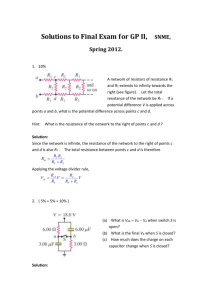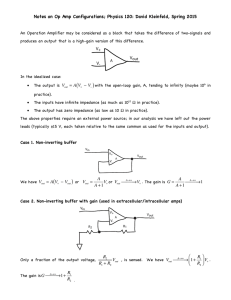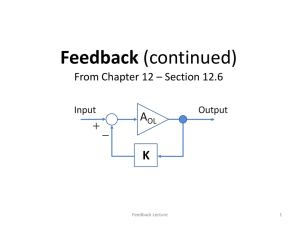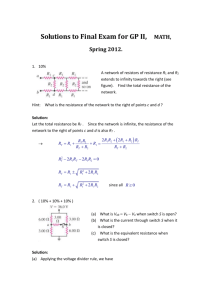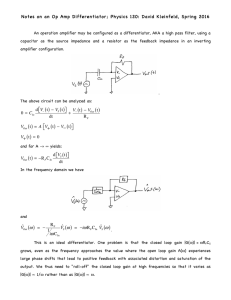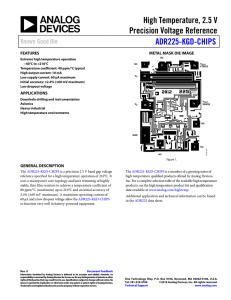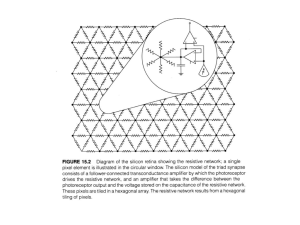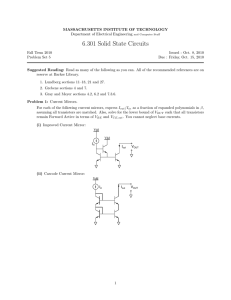Physics 173 / BGGN 266 Primer on OpAmp Basics
advertisement
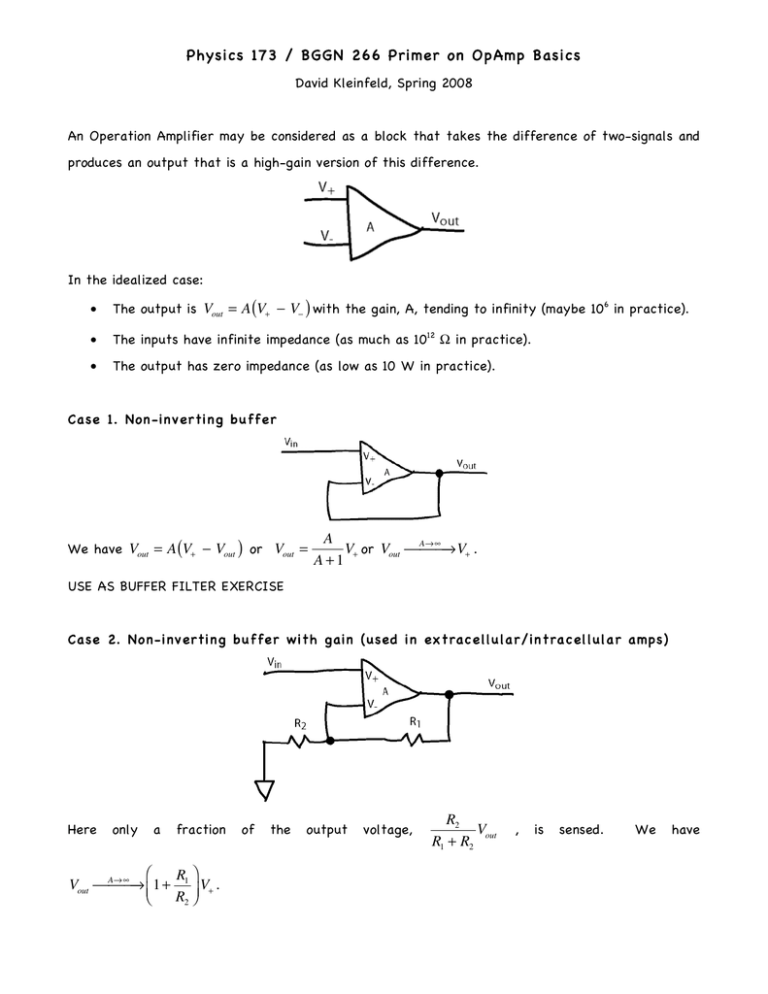
Physics 173 / BGGN 266 Primer on OpAmp Basics David Kleinfeld, Spring 2008 An Operation Amplifier may be considered as a block that takes the difference of two-signals and produces an output that is a high-gain version of this difference. In the idealized case: • The output is Vout = A (V+ !!!V! ) with the gain, A, tending to infinity (maybe 106 in practice). • The inputs have infinite impedance (as much as 1012 Ω in practice). • The output has zero impedance (as low as 10 W in practice). Ca se 1. Non -in v erti n g bu ff er We have Vout = A (V+ !!!Vout ) or Vout = A V+ or Vout #A!" ## ! V+ . A +1 USE AS BUFFER FILTER EXERCISE Ca se 2. No n-i nv erti n g bu f fer w ith gain (u sed i n ex trac ellu la r/in tra c ellula r a mps ) Here only a fraction $ R ' Vout #A!" ## ! & 1 + 1 ) V+ . R2 ( % of the output voltage, R2 Vout R1 + R2 , is sensed. We have Ca se 3. Cu rren t- to -vo lta ge conv erter (us ed as pho to diod e/p hotomu ltiplier tub e amplif iers) We have (V! !!!Vout ) = I R Vout = A (V+ !!!V! ) and so that Vout = A (V+ !!!IR ) A +1 or Vout #A!" ## ! V+ !$IR . The input V+ is either grounded or set to an oddest voltage Voffset. It is instructive to calculate the input impedance seen by the current source. We take V+ = 0 for simplicity and find the impedance as Rin = V! R . This as the gain does to infinity, the input = I 1+ A to the current measurement goes to zero. Case 4. Summing Amplifier with gain. Here we convert input voltages into currents by passing them through a resistor, and sum these currents with the above circuit. The summing junction makes use of the effective low input impedance Rin ≈ Rf/A. The current from input voltage V1 is V1/R1, that from V2 is V2/R2, etc. These %V V V ( current sum so that Vout ### ! V+ !$R f ' 1 + 2 + 3 * . & R1 R2 R3 ) A!"

